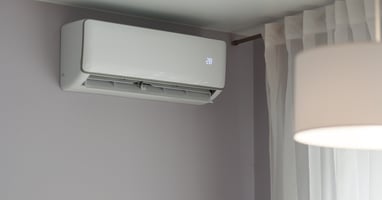Energy bills can get expensive, especially during the hot summer months or the cold winter months....
8 Biggest Contributors to High Energy Bills for Mobile Homes

Mobile home living offers affordability and flexibility, but many residents face an unwelcome surprise each month: sky-high energy bills. These manufactured homes present unique challenges that can drain your wallet faster than you'd expect. Understanding what drives these costs up will help you take control of your monthly expenses and create a more comfortable living environment.
Unlike traditional stick-built homes, mobile homes face specific structural and design limitations that directly impact energy efficiency. The good news is that most of these issues have practical solutions that can significantly reduce your monthly energy costs. Continue reading to discover the biggest contributors to high energy bills for mobile homes.
Inadequate Insulation
Mobile homes often lack sufficient insulation in critical areas. The factory construction process prioritizes speed and cost-effectiveness over maximum energy efficiency, leaving many homes with thin insulation that fails to maintain consistent indoor temperatures.
The walls in manufactured homes typically have less insulation than those in traditional homes. This thin barrier allows heat to escape during winter months and penetrate during summer, forcing your heating and cooling systems to work overtime. The floor presents an even greater challenge, since many mobile homes sit elevated on piers, creating an exposed underside that loses significant energy.
Your roof also plays a crucial role in energy efficiency. Many mobile home roofs lack adequate insulation, turning your home into an oven during the summer months. Heat builds up in the roof cavity and radiates down into your living space, making your air conditioning system struggle to maintain comfortable temperatures.
Upgrading insulation in these key areas delivers immediate results. Adding blown-in insulation to walls, installing proper floor insulation with vapor barriers beneath your home, and improving roof insulation can cut annual energy costs.

Outdated Windows and Doors
Single-pane windows and hollow-core doors, common in older mobile homes, cause significant energy loss. These components act like holes in your home's thermal envelope, allowing conditioned air to escape and outside temperatures to infiltrate your living space.
Old windows lose energy through several mechanisms. Single-pane glass conducts heat and cold directly, while gaps around window frames allow air to leak freely. During winter, cold glass surfaces create condensation problems and uncomfortable drafts near seating areas.
Entry doors in mobile homes often fit poorly in their frames, creating visible gaps that allow air movement. Storm doors help, but cannot completely compensate for a poorly sealed primary door.
Replacing single-pane windows with double-pane, low-E models dramatically improves thermal performance. Installing quality entry doors with proper weatherstripping and adjustable thresholds stops air leaks at these critical points. These upgrades pay for themselves through reduced energy costs while improving comfort levels throughout your home.
HVAC System Problems
Aging heating and cooling equipment consumes excessive energy while delivering poor performance. Many mobile homes rely on older systems that have lost efficiency over time or were undersized from the beginning.
Mobile home furnaces face unique challenges in manufactured housing environments. Ductwork often runs through unconditioned spaces underneath the home, where temperature extremes force the system to work harder. Poorly sealed ducts leak conditioned air into these spaces, wasting energy and reducing system effectiveness.
Capitol Supply & Service understands the unique size and construction of mobile homes and will make sure your mobile home furnace operates at peak performance. Contact us today for our top-notch installation and repair services.
Air conditioning units struggle with inadequate airflow when filters become clogged or ductwork develops restrictions. Refrigerant leaks reduce cooling capacity while increasing energy consumption. Regular maintenance prevents many of these issues, but neglect leads to steadily climbing energy bills.
Upgrading to properly sized, high-efficiency equipment provides immediate savings. Modern heat pumps offer excellent performance in mobile home applications, providing both heating and cooling with superior efficiency ratings.
Air Leaks
Small gaps and cracks throughout your mobile home add up to significant energy loss. These air leaks force your heating and cooling systems to run longer cycles to maintain desired temperatures.
Common leak locations include electrical outlets on exterior walls, plumbing penetrations, and connections between wall and floor sections. The junction where your home meets its foundation often develops gaps as the structure settles over time.
Bathroom and kitchen exhaust fans create direct connections to the outside. When these fans lack proper dampers or have worn seals, they allow continuous air exchange, wasting energy year-round.
Identifying leaks requires either systematic inspection during windy conditions or the use of incense sticks to detect air movement. Sealing these gaps with appropriate caulk, weatherstripping, or expanding foam stops energy loss and improves comfort levels throughout your home.

Water Heating Inefficiencies
Water heating typically represents the second-largest energy expense in most homes. Mobile homes face additional challenges that can push these costs even higher.
Tank-style water heaters in mobile homes often sit in poorly insulated locations where ambient temperatures fluctuate significantly. Extreme cold or heat forces the water heater to work harder, maintaining target temperatures. Older units lose efficiency as sediment builds up in the tank, creating an insulating layer that reduces heat transfer.
Hot water distribution systems in mobile homes frequently include long pipe runs that lose heat before reaching fixtures. These heat losses mean you wait longer for hot water while energy literally flows down the drain.
Upgrading to an efficient tankless or hybrid water heater eliminates standby losses. Insulating hot water pipes and installing low-flow fixtures reduce both energy consumption and water waste. Setting appropriate temperature levels prevents overheating while maintaining comfort.
Energy-Hungry Appliances and Electronics
Older appliances consume significantly more energy than modern, efficient models. Many mobile home residents continue using appliances that predate current energy-efficiency standards, unaware of how much these devices cost to operate.
Refrigerators older than ten years typically use twice the energy of new models. Electric dryers, particularly when vented improperly, work harder and longer to dry clothes. Space heaters and window air conditioners often compensate for inadequate central systems but consume tremendous amounts of electricity.
Electronic devices create phantom loads that consume energy even when turned off. Entertainment systems, computer equipment, and charging devices draw power continuously, adding $100 to $200 to electric bills annually.
Replacing the most energy-hungry appliances with ENERGY STAR models provides immediate savings. Using power strips to eliminate phantom loads and adjusting usage habits reduces consumption without sacrificing comfort.
Roofing Problems
Mobile home roofs face unique stresses that can compromise energy efficiency over time. Thermal cycling, wind loading, and moisture exposure create conditions that affect insulation performance and air sealing.
Roof membrane problems allow air infiltration that bypasses insulation systems. Small tears or loose seams create pathways for hot or cold air to enter your home directly. Metal roofing without proper underlayment conducts heat efficiently, turning your roof into a thermal conductor.
Inadequate roof ventilation traps heat in the summer months, creating extreme temperatures that penetrate living spaces. Poor ventilation also allows moisture to accumulate, reducing insulation effectiveness and creating condensation problems.
Regular roof maintenance prevents small problems from becoming major energy drains. Adding reflective coatings reduces heat absorption, while improved ventilation systems help moderate temperatures year-round.
Strategic Landscaping
The area surrounding your mobile home significantly affects energy consumption through solar gain, wind exposure, and ground temperature.
Homes without shade experience direct solar heating through windows and walls during the summer months. This solar gain forces air conditioning systems to remove tremendous amounts of heat, increasing energy consumption substantially.
Wind exposure increases heat loss during winter by creating convective cooling around your home's exterior surfaces. Mobile homes sitting in open areas without windbreaks face higher heating costs throughout cold seasons.
Planting deciduous trees on the south and west sides of your home provides summer shade while allowing winter sun to reach your home. Evergreen trees or shrubs on the north side create windbreaks, reducing heating costs. Ground covers and mulching around your home's perimeter moderate soil temperatures, reducing the load on your heating and cooling systems.
Take Action To Reduce Your Energy Bills
High energy bills in mobile homes result from multiple contributing factors working together. Addressing insulation deficiencies, sealing air leaks, upgrading inefficient equipment, and implementing strategic improvements can reduce your annual energy costs.
Start with the most cost-effective improvements like sealing air leaks and adding insulation where possible. Then tackle larger upgrades like window replacements and HVAC improvements as your budget allows. Each improvement builds on the others, creating a more efficient and comfortable living environment while putting money back in your pocket every month.



